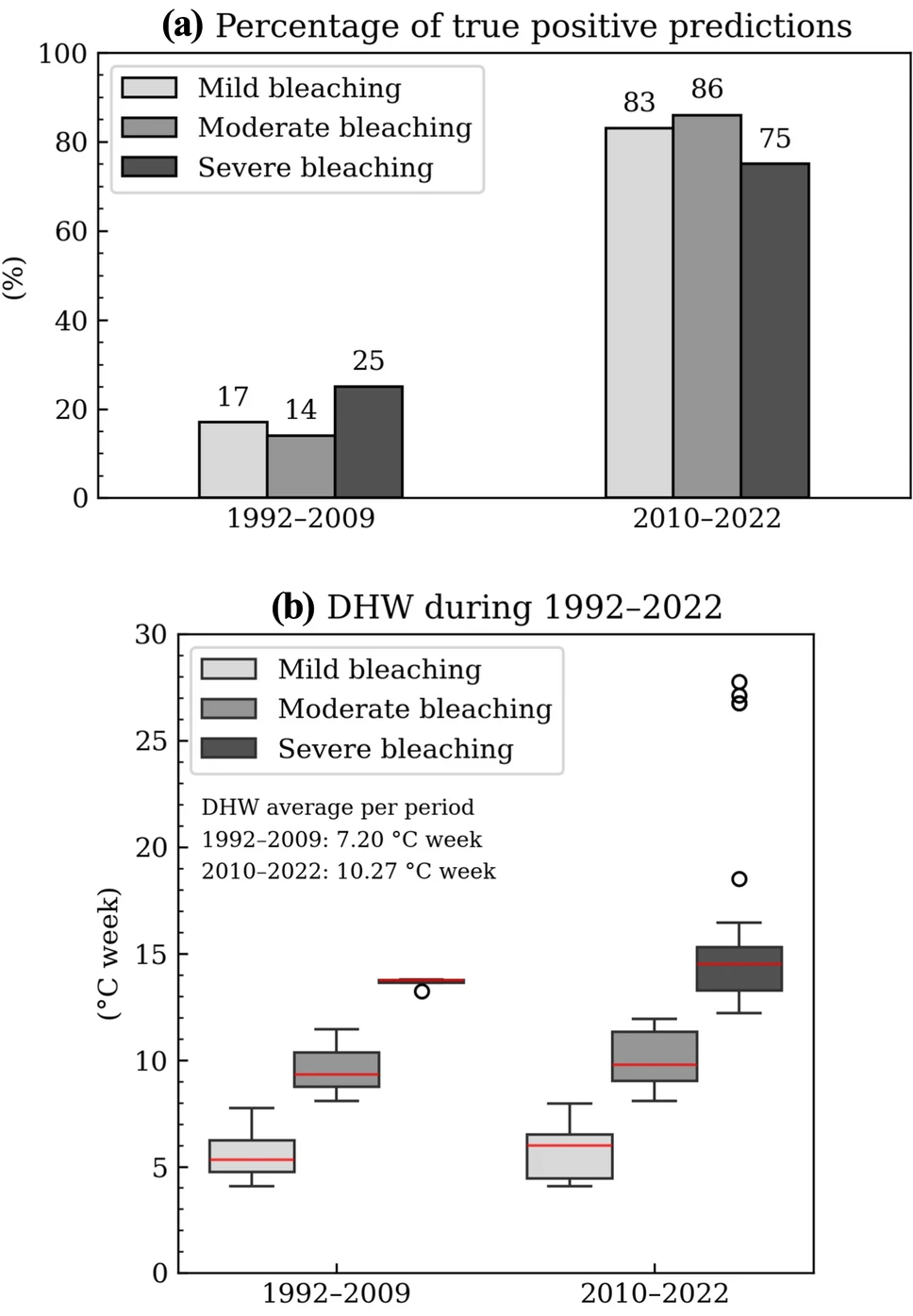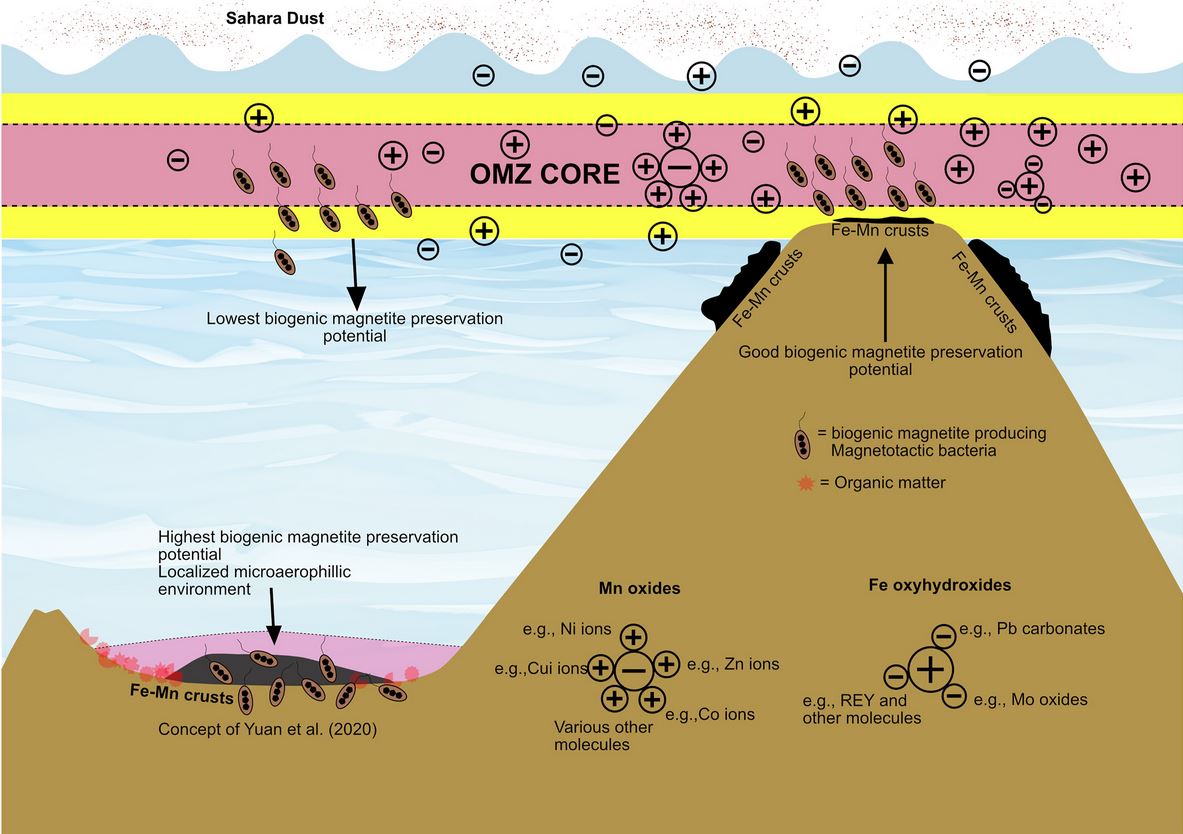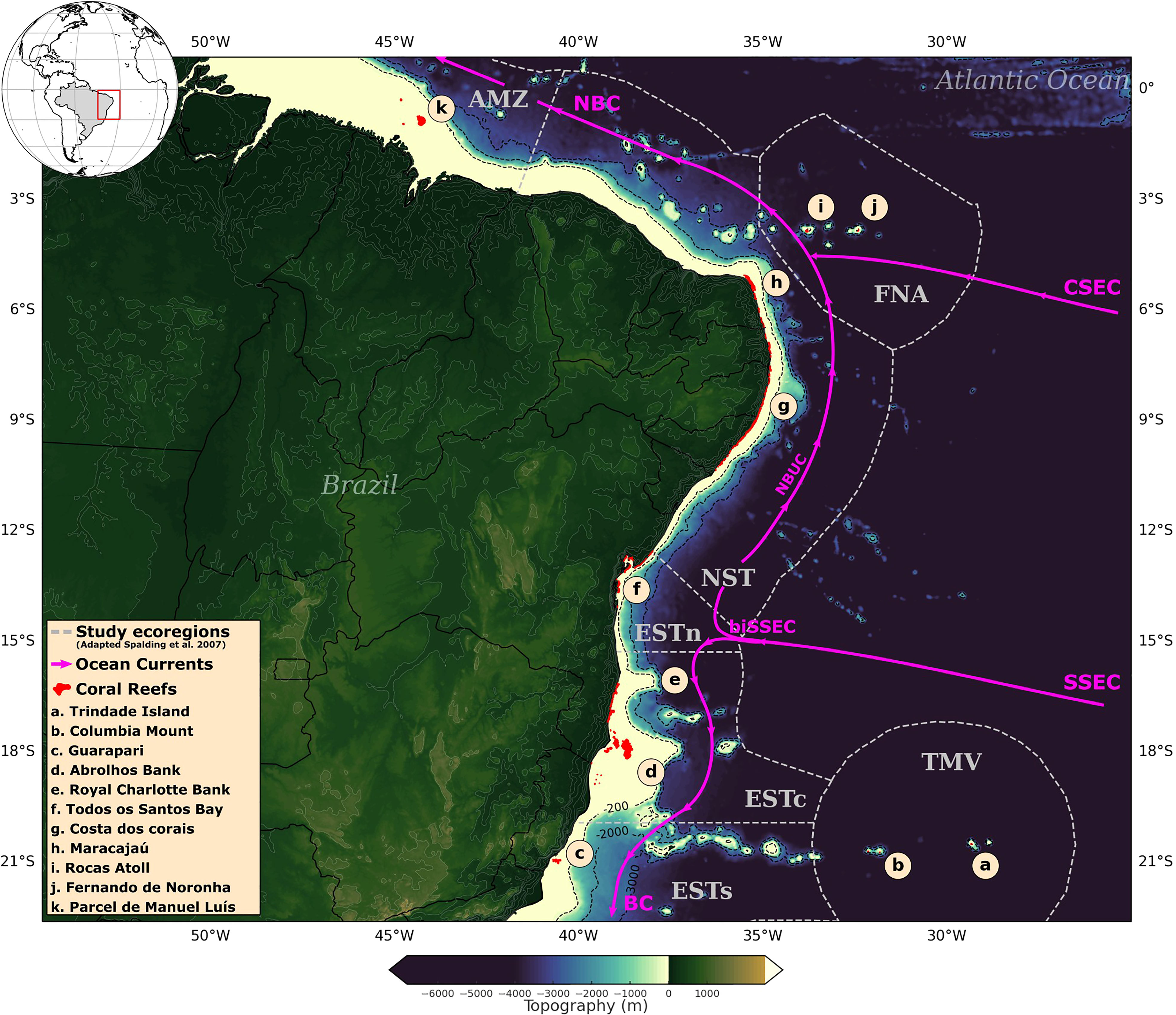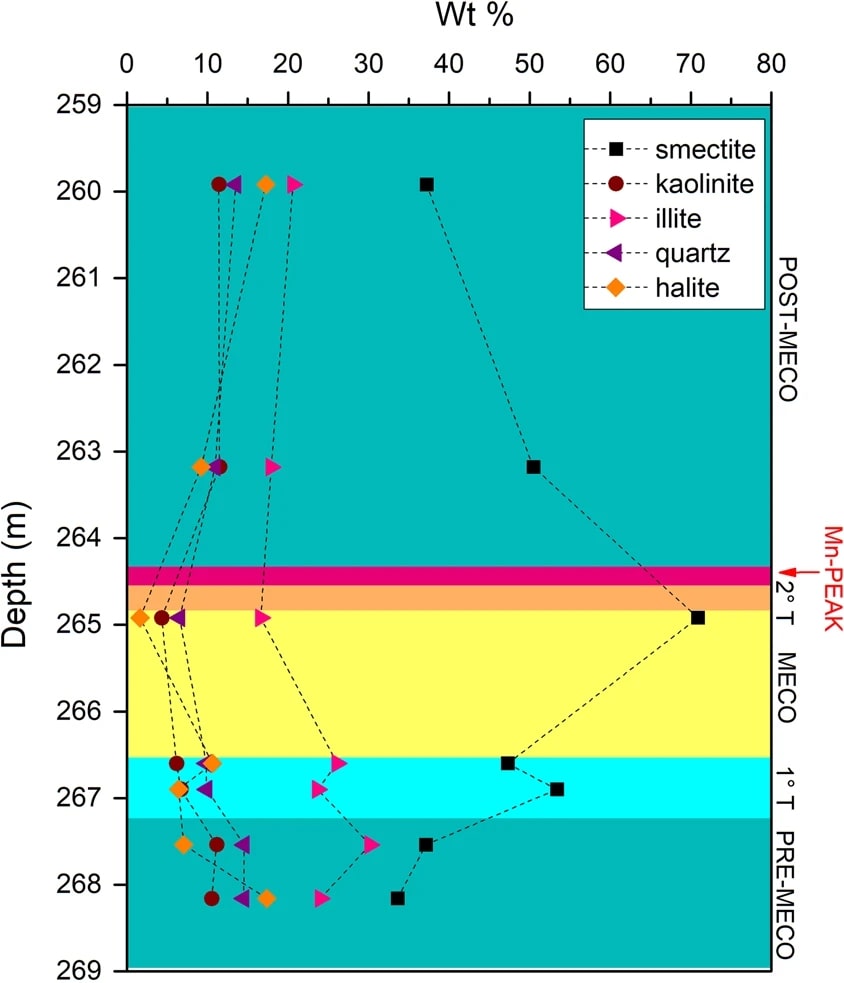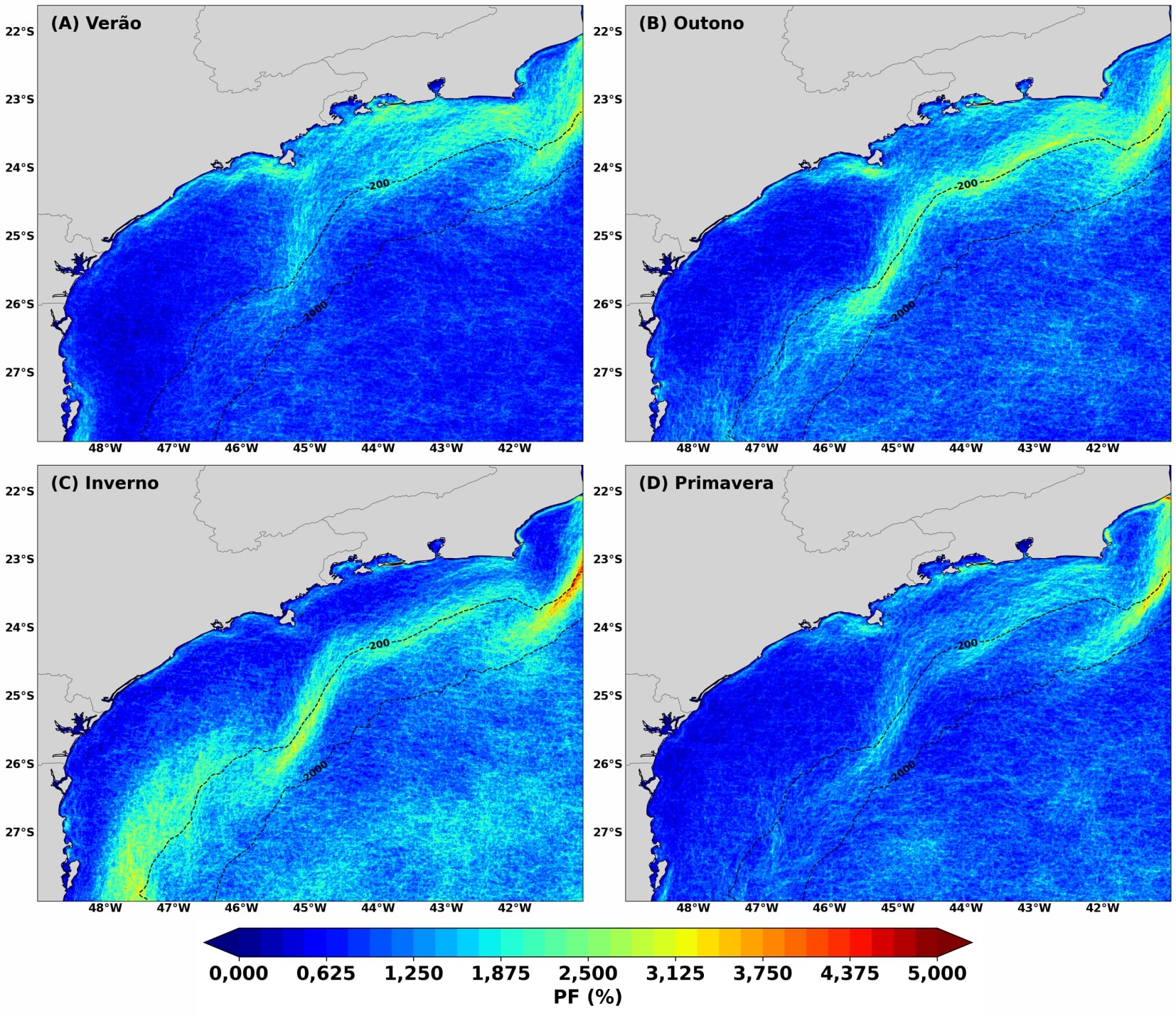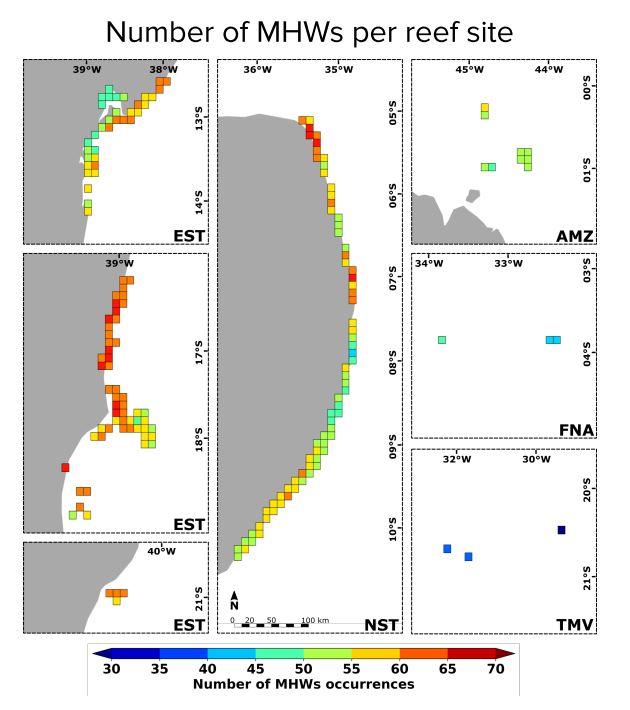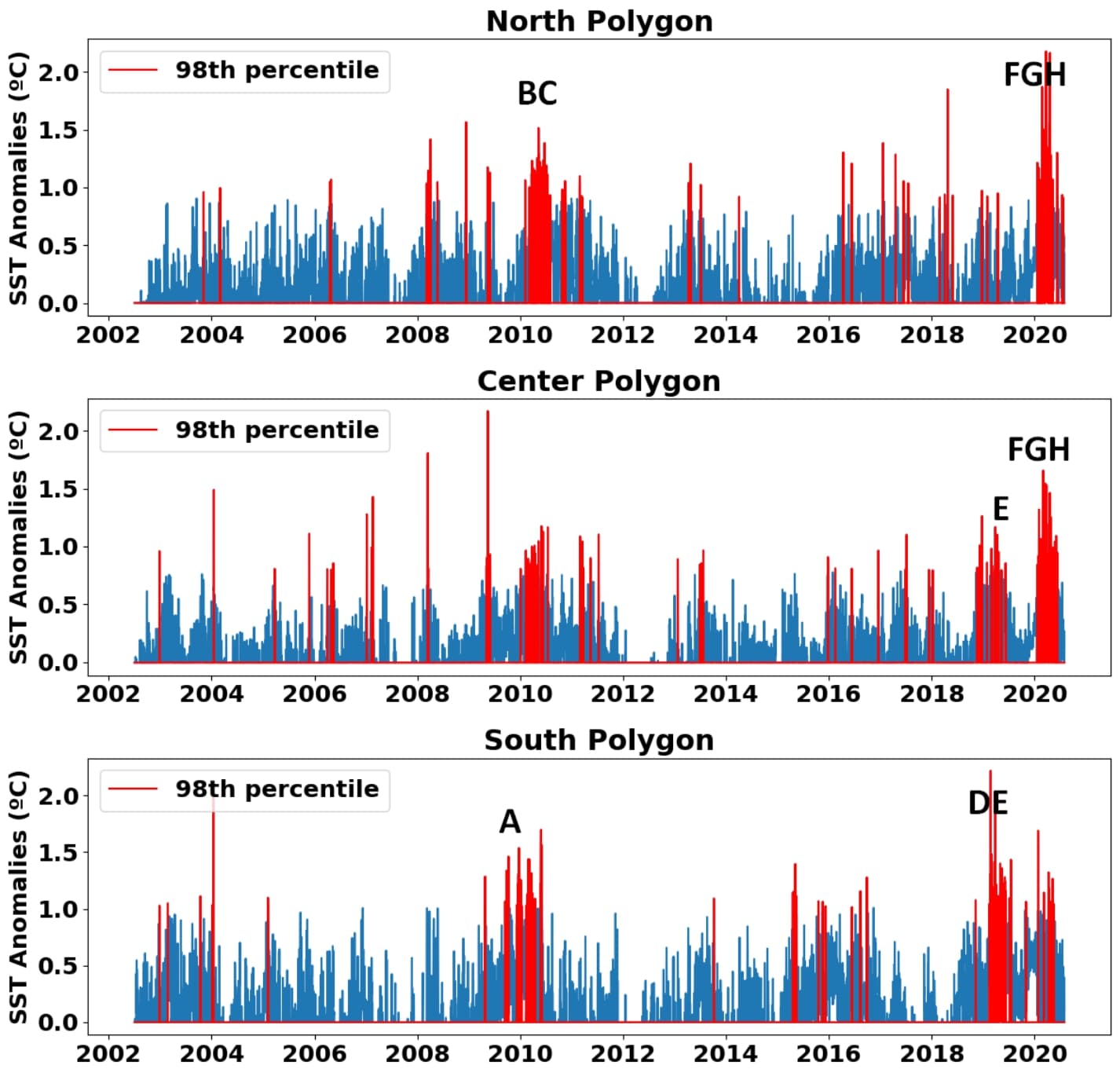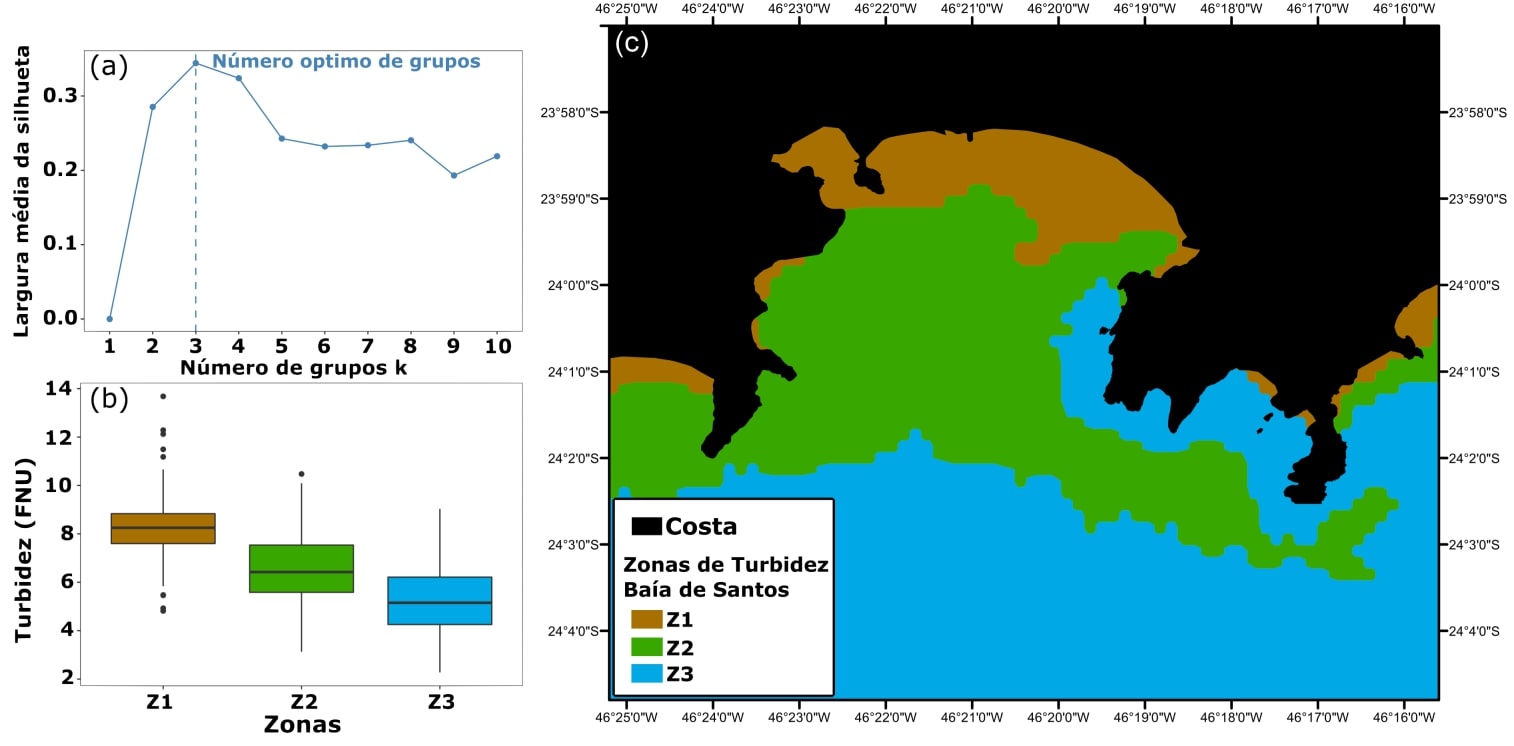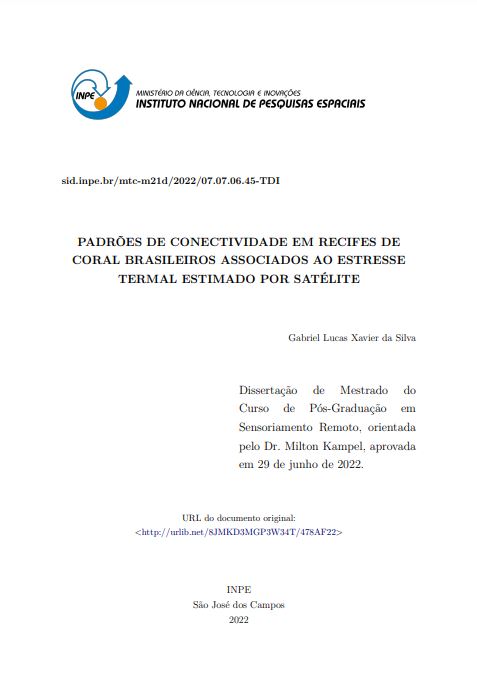Distribution and intensity of marine heatwaves over Brazilian coral reefs: relationships with bleaching events
Gabriel Lucas Xavier da Silva, Milton Kampel, and Vitor Paiva
The occurrence of Marine Heatwaves (MHWs) has intensified its frequency and intensity over the past years due to climate change and ocean warming. This phenomenon is characterized by abnormal sea surface temperature (SST) conditions, where SST stays above a climatological temperature threshold for at least five consecutive days. This anomaly pattern is associated with various impacts on marine ecosystems such as an increase in coral bleaching events, mass mortality of organisms, and loss of benthic habitat. This study aims to assess the occurrence of Marine Heatwaves on Brazilian coral reefs, tracking its spatiotemporal distribution, intensity, and potential relationship with historical coral bleaching events in the region. NOAA Coral Reef Watch (CRW) daily global 5km SST product, also known as CoralTemp, was extracted for 180 coral reef sites along the Brazilian continental margin in the period from 1985 to 2020. CoralTemp SST data were statistically compared against in situ buoy data available from the Brazilian National Buoy Program - PNBOIA (https://www.marinha.mil.br/chm/dados-do-goos-brasil/pnboia-mapa) in terms of the correlation coefficient (R = 0.99), root mean square error (RMSE = 0.55ºC) and bias (-0.06ºC). CoralTemp SST time series were decomposed in order to obtain its trend, seasonal and residual components. We then performed a normalization procedure by subtracting the seasonal component from the original time series, removing the influence of periodical variability in order to detect only anomalous events. Daily positive SST anomalies were calculated considering the deviation from the climatological mean at each coral reef site. Then, MHWs were identified on the basis of the 90th percentile threshold if presenting a minimum duration of five consecutive days. In addition, intervals of two or less days between continuous events above 90th percentile were considered as part of the same MHW. After the MHW identification, we calculated the intensity, duration and cumulative intensity (ºC days) for each event. These events were also classified according to their severity, considering the maximum intensity and the 90th percentile deviation from the climatological mean. In order to verify the potential relationship with coral bleaching events, the identified MHWs were grouped into five marine ecoregions according to the location of the coral reef sites: Eastern Brazil (EST), Trindade and Martim Vaz islands (TMZ), Northeastern Brazil (NST), Fernando de Noronha island and Atol das Rocas (FNA) and the Amazon region (AMZ). Then, the identified MHWs were matched with the bleaching events reported in the literature and/or registered in public databases. Preliminary results indicated that the average occurrence and intensity of MHWs on Brazilian coral reef sites varied greatly according to their marine ecoregion. An average of 78, 58, 70, 48, 63 MHWs were spotted at EST, TMV, NST, FNA and AMZ ecoregions, respectively. The intensity of MHWs were greater at coral reef sites farther from the equatorial region, reaching a maximum anomaly peak of 2.70 ºC at TMV and 2.62 ºC at EST. The cumulative intensity observed for TMV and EST were also > 104 (ºC days). Although northern coral reef sites also presented severe MHWs, their maximum anomaly peak and cumulative intensity were < 2 ºC and < 104 (ºC days). Also, 50% of the MHWs here identified were detected in the last 10 years, indicating a strong increase in the probability of occurrence of these events. Regarding coral bleaching, all the most intense and persistent MHWs occurrences seem to be associated with at least one reported bleaching event per marine ecoregion, indicating that although South Atlantic coral reefs are more resistant to positive temperature anomalies, periods of extreme and persistent warming are still threatening their health and conservation. Ultimately, our results show that the occurrence of MHWs on the Brazilian coral reefs are intensifying over the years, mainly in the southern communities. Further analyses are also being conducted to better understand the impacts of less severe MHWs on these ecosystems.
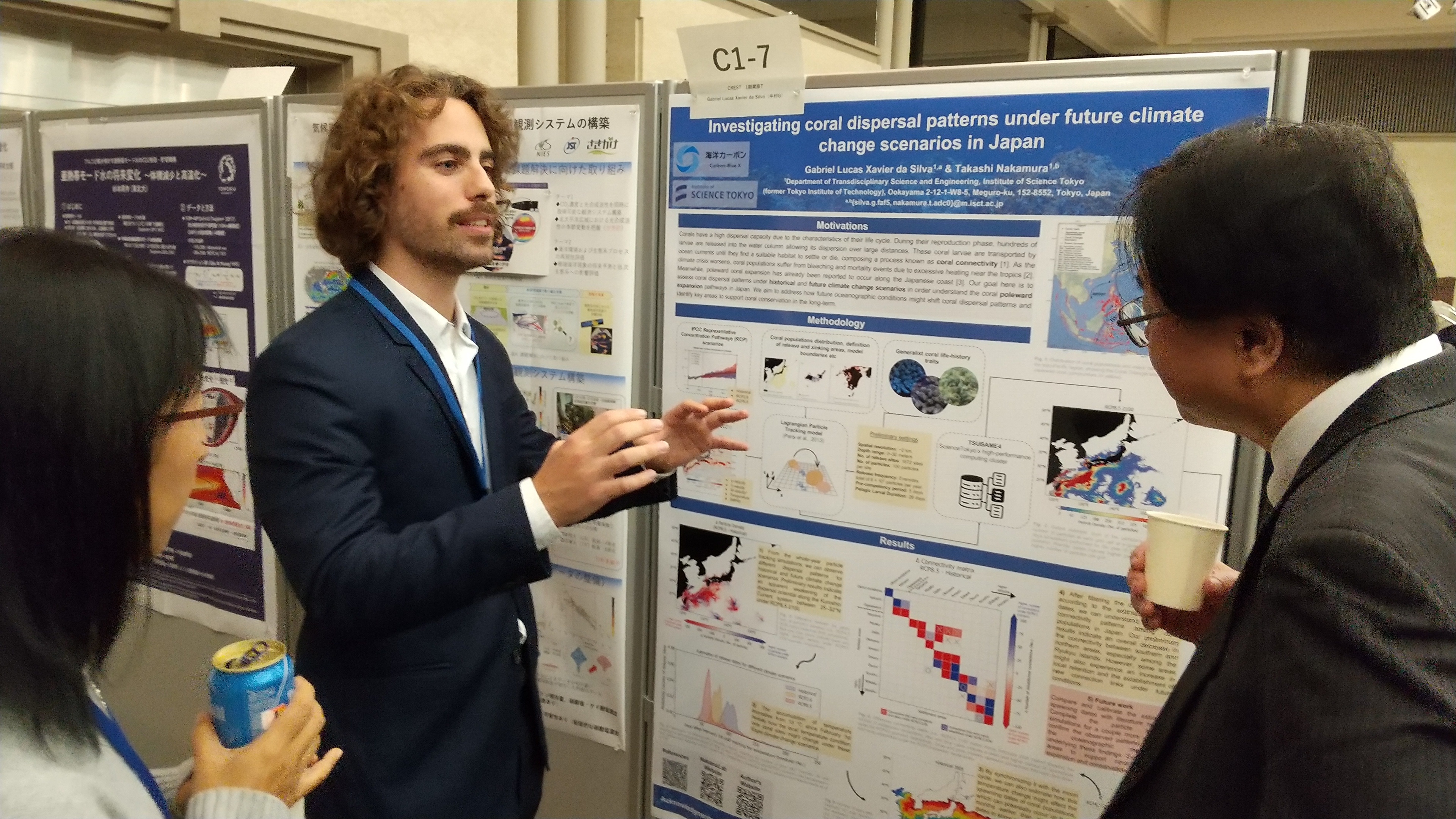 Investigating coral dispersal patterns under future climate change scenarios in JapanCREST Marine Carbon and PRESTO Marine Biosphere Joint Internal Conference, Hiroshima (Japan), 2024
Investigating coral dispersal patterns under future climate change scenarios in JapanCREST Marine Carbon and PRESTO Marine Biosphere Joint Internal Conference, Hiroshima (Japan), 2024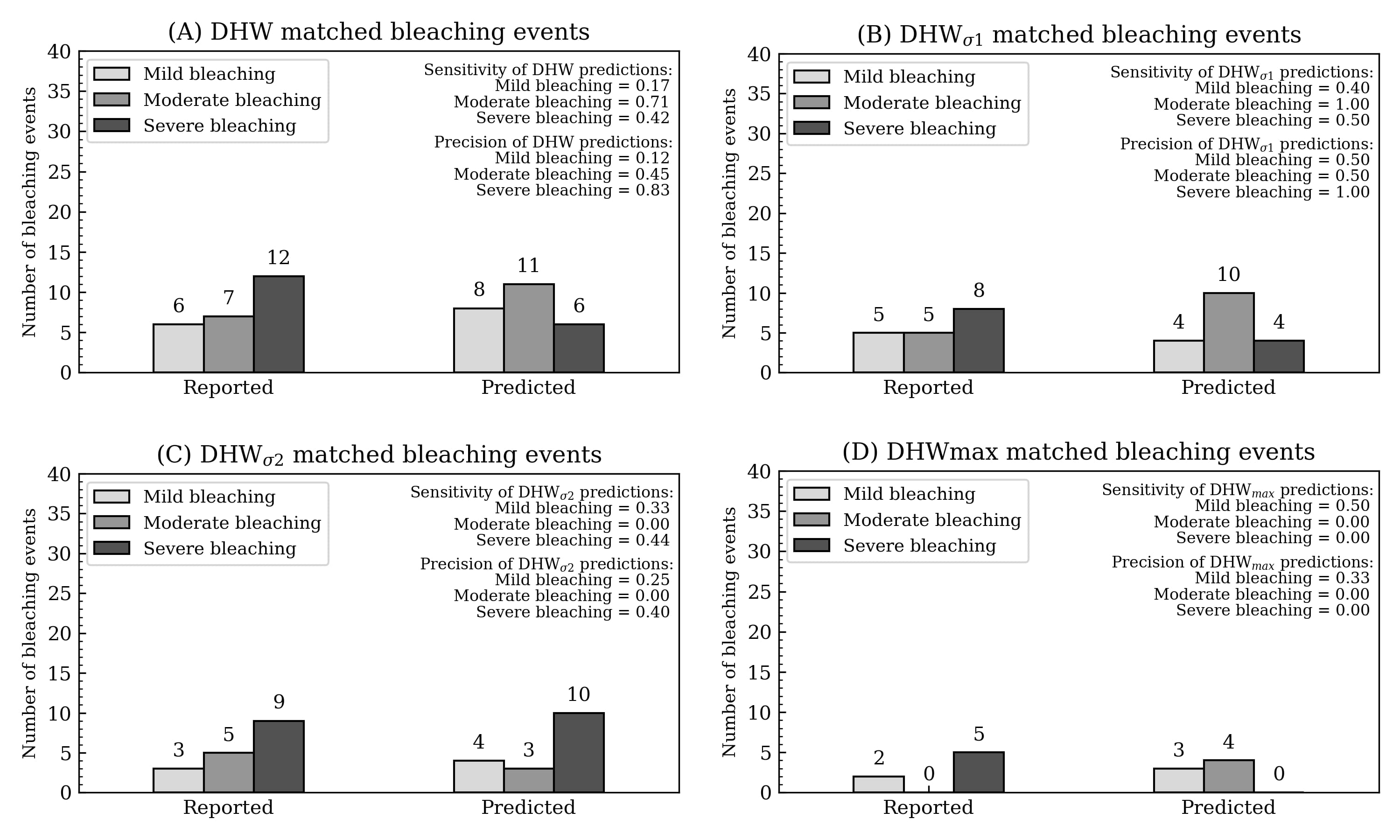 Anomalias da temperatura da superfície do mar estimada por satélite e o branqueamento de corais durante os últimos 30 anos no BrasilXX Congresso Latinoamericano de Ciencias del Mar (COLACMAR) / XIII Congresso Brasileiro de Oceanografia (CBO), Itajaí (Brasil), 2024
Anomalias da temperatura da superfície do mar estimada por satélite e o branqueamento de corais durante os últimos 30 anos no BrasilXX Congresso Latinoamericano de Ciencias del Mar (COLACMAR) / XIII Congresso Brasileiro de Oceanografia (CBO), Itajaí (Brasil), 2024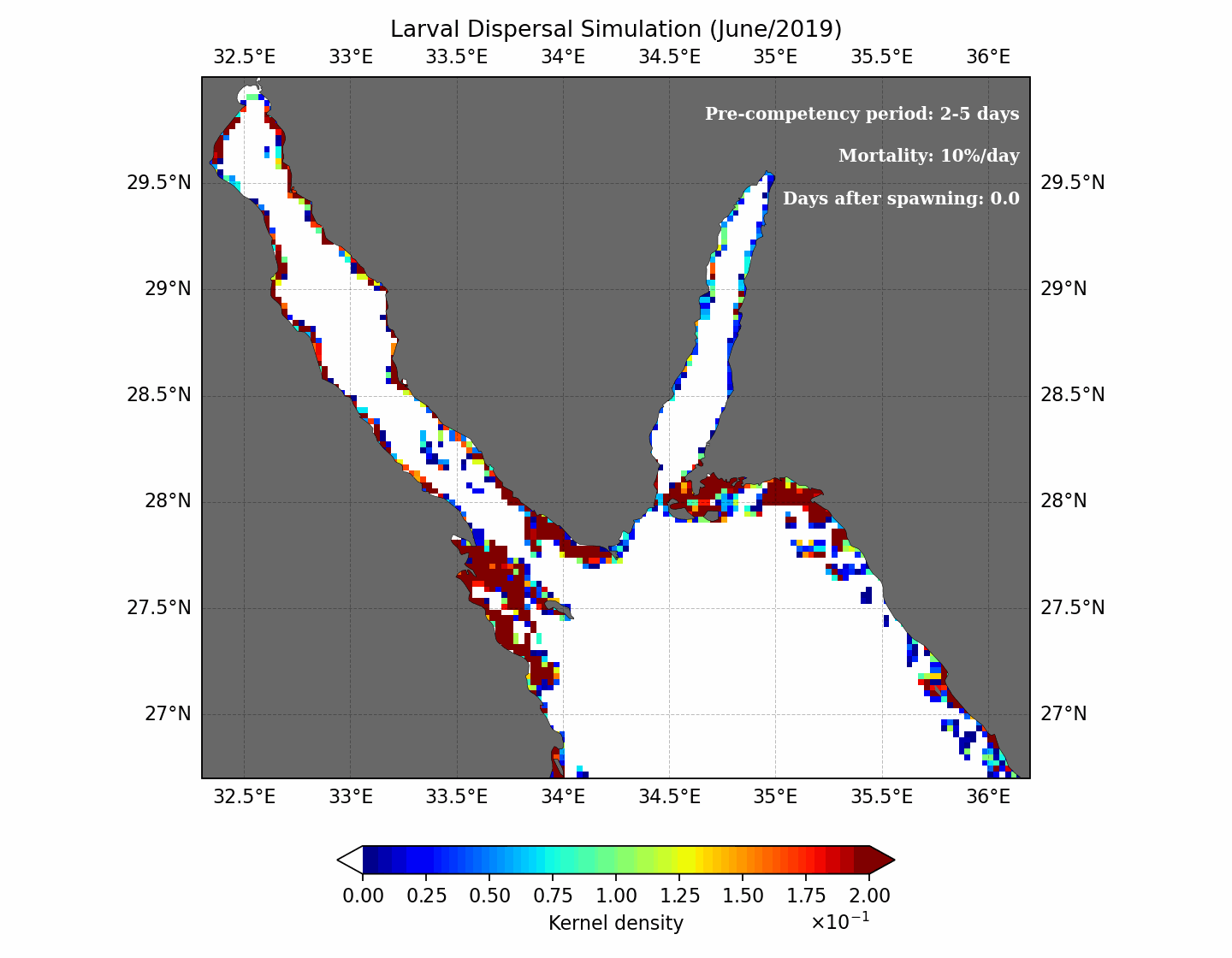 Analyzing thermal modulation mechanisms and possible connectivity-induced variability in bleaching thresholds via multiscale hydrodynamics modelingInternational Conference on the Marine Environment of the Red Sea (ICMERS), Thuwal (Saudi Arabia), 2023
Analyzing thermal modulation mechanisms and possible connectivity-induced variability in bleaching thresholds via multiscale hydrodynamics modelingInternational Conference on the Marine Environment of the Red Sea (ICMERS), Thuwal (Saudi Arabia), 2023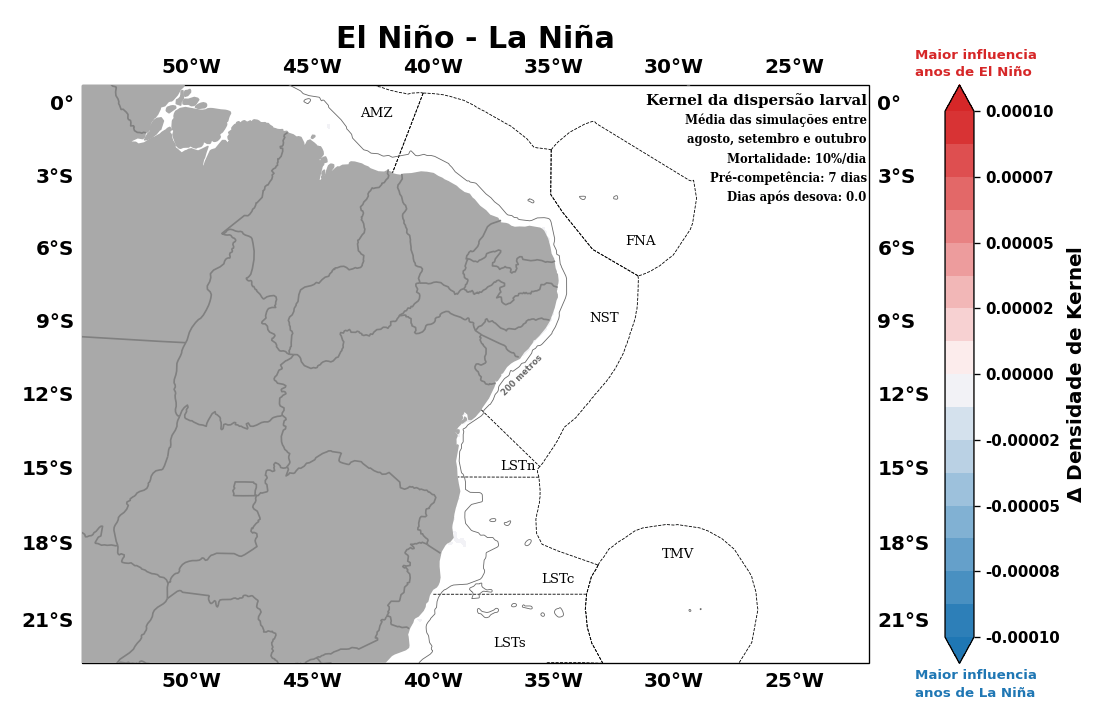 Shifts in connectivity patterns of a major coral reef builder sp. during ENSO eventsXIX Congresso Latinoamericano de Ciencias del Mar (COLACMAR), Panama City (Panama), 2022
Shifts in connectivity patterns of a major coral reef builder sp. during ENSO eventsXIX Congresso Latinoamericano de Ciencias del Mar (COLACMAR), Panama City (Panama), 2022